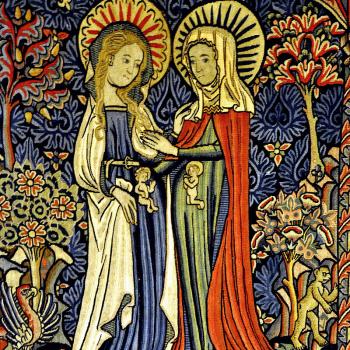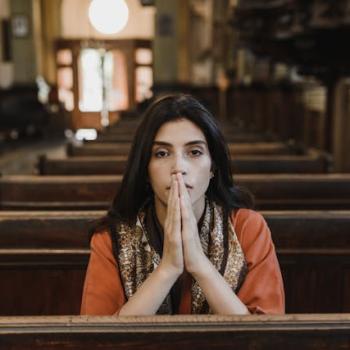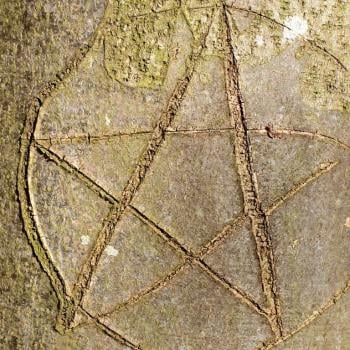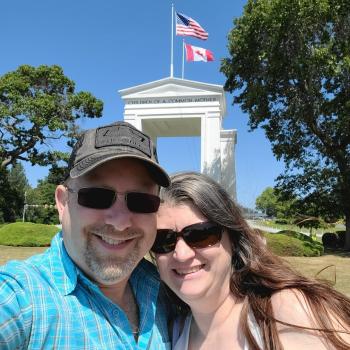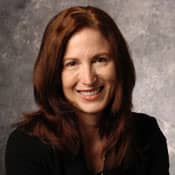The Pharisees can't wrap their minds around how Jesus, a sinner who heals on the Sabbath, could do such a miraculous sign.
Healing of life-threatening conditions was allowed on the Sabbath, but congenital blindness could have waited until the next day. Kneading was one of thirty-nine types of work forbidden on the Sabbath, and Jesus kneaded the mud before he spread it on the man's eyes (Koester, 101).
The man's parents answer the Pharisees: "We don't know how it is that he sees . . . Ask him: he is of age. He will speak for himself" (9:21).
They don't wish to be evicted from the synagogue by suggesting the obvious, i.e., that Jesus is the Messiah.
The healed man answers the Pharisees: "I have told you already, and you would not listen. Why do you want to hear it again? Do you also want to become his disciples?" (9:27).
Their harassment of the formerly blind man emboldens his faith. As their fear heightens, so does his faith.
Formerly Blind Man answers Jesus: "Lord, I believe" (9:38).
Jesus seeks the man out. Other titles for Jesus that have surfaced in this story so far (Messiah, prophet) give way to one associated with his role as coming judge: Son of Man.
The formerly blind man's confession of faith sets the table for Jesus' summation of the significance of this "sign." He tells the formerly blind man, with some Pharisees listening in, "I came into this world for judgment so that those who do not see may see, and those who do see may become blind" (Jn. 9:39).
The eavesdropping Pharisees say, almost plaintively, "Surely we are not blind, are we?"
This note of self-doubt is as close as they come, at least in this scenario, to the formerly blind man's confession of faith. It could be the beginning of spiritual sight for these Pharisees if they get the role reversal that has been going on since the disciples asked the first question, "Rabbi, who sinned . . .?" (9:2).
The Pharisees came into this story of restored sight assuming they could see and the man was blind. They "saw" that people who were blind, ill, or poor were that way because they had sinned against God. They "saw" that their laws and stipulations were the path to life. Therefore, healings were not to take place on the Sabbath. They "saw" that Jesus could not be a genuine prophet or healer because he did not abide by their Sabbath laws. They "saw" that, since Jesus was a sinner the healing could not be genuine—the man must have been able to see already. They "saw" that because this man had been born blind, he was a sinner and could teach them nothing (9:34).
There is a story of a woman blind from birth who was asked by a friend, "How do you sing 'Amazing Grace'? When we sing it in church?" We all remember the words: "Amazing Grace, how sweet the sound, that saved a wretch like me. I once was lost but now am found, was blind but now I see."
The woman answered, "When we get to that verse, I straighten my shoulders, and sing with gusto, 'Amazing Grace, how sweet the sound, that saved a wretch like me. I once was lost, but now am found, was blind, and I still can't see! But . . . praise God from whom all blessings flow!"
We need to take care in our prayers, preaching, and teaching, that we don't equate physical blindness with lack of spiritual discernment. A person can be physically blind and have 20/20 spiritual vision. And a person can have perfect 20/20 physical vision and be spiritually unable to discern a thing.
That is Jesus' assessment of the Pharisees at the close of this scene. Their sin "remains" (from verb meno- to abide, remain, or stay) as long as they refuse to recognize his identity as the light of the world. Their sin "remains," as long as they refuse to abide in, stay, remain in (meno) him (9:41).
I say we take a page out of the discipleship book of this stubborn, outspoken formerly blind beggar. He allowed everyone who sought to suppress his faith to fan its flames. He became a force to be reckoned with. He refused to cave or fold up when his faith was challenged. Let's answer his question "Do you also want to become his disciples?" with a resounding "Yes!"
Sources Cited
Raymond E. Brown, The Gospel According to John, I-XII, The Anchor Bible (New York: Doubleday and Company, Inc, 1979).
Craig Koester, Symbolism in the Fourth Gospel: Meaning, Mystery, Community (Augsburg Fortress Press, 1995).
Andrew T. Lincoln, The Gospel According to Saint John: Black's New Testament Commentary (Hendrickson Publishers, 2005).
